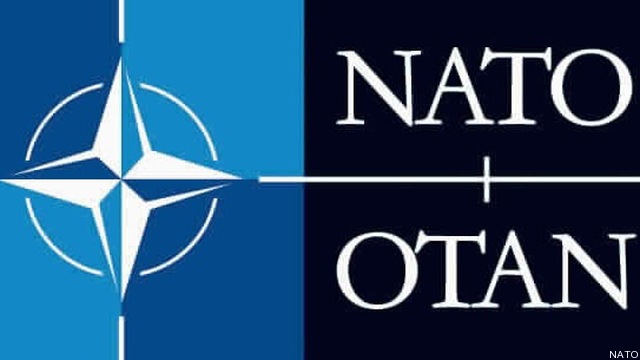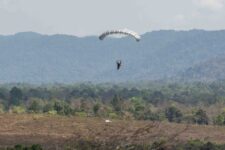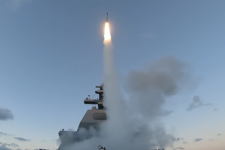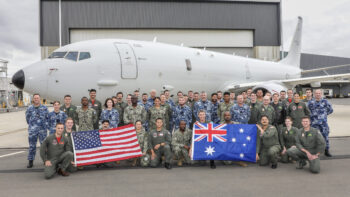
Outside of the State Department and upper reaches of the military, few Americans know much about how NATO actually works. The Strategic Concept, STANAGS, NATO ministerials and the increasing size and reach of NATO exercises are foreign to most. The dialogue about the world’s most successful alliance has been dominated of late by President Trump’s often inaccurate statements about alliance burden sharing. So it’s particularly refreshing to offer this clearly written, sober and accurate assessment of NATO as it hits 70 by Rachel Ellehuus, an expert at the Center for Strategic and International Studies. Read on! The Editor.
As NATO celebrates its 70th year, the most important question to consider is, what has been the secret to the alliance’s longevity?
In essence, it is the triumvirate of integrated strategy, defense planning, and command structure that distinguish NATO from other international security organizations and give it more staying power than ad hoc coalitions of the willing. For those, like me, who believe in the power of alliances and partnerships to augment and underpin national power, how can these three competencies be energized to ensure NATO’s relevance into the future?
Grand Strategy
Even with 29 members (soon to be 30), NATO can unite countries with mutual, as well as disparate, interests around a common purpose.
This happens first and foremost through NATO’s grand strategy document, the Strategic Concept, which is supported and refined by Summit Communiques. While both are often criticized for being all things to everyone — often likened to a Christmas tree upon which each country hangs its favorite ornament — they drive ministerial agendas, the alliance’s work plan and its Defense Planning Process.
NATO’s current Strategic Concept may date back to 2010, but it is comprehensive enough to remain valid today. It highlights NATO’s three essential core tasks –collective defense, crisis management and cooperative security – and lays out the primary threats and challenges the alliance and its members, from deterrence and defense, to transnational threats, to nuclear proliferation, ballistic missile and cyber threats. And while the global security environment has changed significantly since 2010, not least due to Russia’s illegal annexation of Crimea and its increasingly brazen use of gray-zone activities, the Strategic Concept offers sufficient language to capture these.
Rather than a new Strategic Concept, what NATO needs is more explicit prioritization of tasks in order to right-size the level of effort and investment. Political Guidance 2019, approved at the NATO Defense Ministerial in February 2019, was an important step in setting NATO’s overall level of ambition. Ideally, it would go one step further by stating that collective defense is the first task among equals and, as such, should be prioritized in terms of resourcing. With such prioritization, less urgent or salient priorities, such as crisis management and capacity building in North Africa, might be outsourced to other actors such as the European Union to divide the labor and capitalize on other organizations’ comparative interests and advantages. While there will be reluctance to relinquish any tasks, one key to a successful strategy is ruthless prioritization.
Integrated Defence Planning Process
A second core strength of NATO is its integrated defense planning process. Informed by the Strategic Concept and Political Guidance, NATO establishes a list of Minimum Capability Requirements, which are then apportioned to the allies. Positively, June 2017 was the first time that all allies accepted 100 percent of their targets. Also, the number of areas in which the United States provides more than 50 percent of any one capability is decreasing.
The primary remaining challenge in defense planning is meeting identified capability shortfalls. Year after year the same low-density, high-demand capabilities – such as strategic lift, air-to-air refueling and surveillance capabilities – appear on that list. The good news is that there are signs the allies are feeling a sense of urgency and becoming more pragmatic. One indicator of this is the German-French decision to move ahead with a join procurement of C-130Js in light of delays to the European A400M program. In order to further incentivize progress on meeting these shortfalls, NATO and the EU must ensure their respective defense planning ‘shortlists’ are the same, and procurement through such mechanisms as the European Defense Fund and NATO Support and Procurement Agency prioritize these capabilities.
Command Structure
Last, but perhaps most important, is the NATO Command Structure, which provides the backbone for alliance missions, operations, and activities. Also embedded here are the Supreme Headquarters Allied Powers Europe (SHAPE) military planners who conduct NATO planning for contingency operations.
At the Brussels Summit in May 2018, heads of state and government endorsed an adapted NATO Command Structure to include a new Joint Force Command in Norfolk to facilitate transatlantic lines of communication; a new Joint Support and Enabling Command in Germany to ensure rapid movement of forces and equipment throughout Europe; and the new Cyber Space Operations Center in Belgium. The adapted Command Structure also calls for drawing more on the NATO Force Structure that resides in individual nations to improve regional situation awareness.
NATO should take three additional steps to ensure its Command Structure is fully fit for purpose. First, it should regionally align its Joint Force Commands at Brunssum, Naples, and Norfolk to the North, South and North Atlantic, respectively, and clarify their relationships with NATO Force Structure elements. Second, work must continue to align NATO’s graduated response plans with member states’ national plans and incorporate both whole-of-government and whole-of-society tools into these plans. The Baltic States are particularly adept at this, as are NATO partners Finland and Sweden.
Taken together, these measures will improve resilience and ensure allies can meet their Article 4 self-defense commitments until NATO follow-on forces arrive. Finally, these structures and plans must be supported by more flexible and timely decision making. As it stands, SACEUR has too few pre-authorized authorities to move forces within theater to deter a second move by an adversary. Likewise, the requirements of some nations to take each decision back to their national Parliaments for approval threatens to slow NATO’s ability to act with the speed of relevance in a crisis. If allies cannot agree on a streamlined decision making process, their national leadership must at least become more attuned to and familiar with the time-sensitive decisions that may come their way.
The Future
As any good strategist will admit, the only certainty in strategy is that there is none. In this sense, NATO’s comprehensive, inclusive approach to grand strategy, iterative defense planning process, and flexible command structure are well suited to managing unforeseen risks and inevitable shocks. With a few additional adjustments – such as more ruthless prioritization, a laser focus on filling key capability shortfalls and better alignment of national, regional, and NATO plans – its members can further solidify NATO’s place as the alliance of choice for decades to come.
Rachel Ellehuus, former former principal director for European and NATO policy in the Pentagon, is the senior fellow and deputy director of the Europe Program at at Center for Strategic and International Studies in Washington.
Israeli F-35s were targeted in Iranian barrage but survived unscathed, IDF says
IDF Chief of Staff Herzi Halevi visited an Israeli base home to F-35s on Monday, emphasizing Iran’s missiles had caused only minor damage to the facility.


























